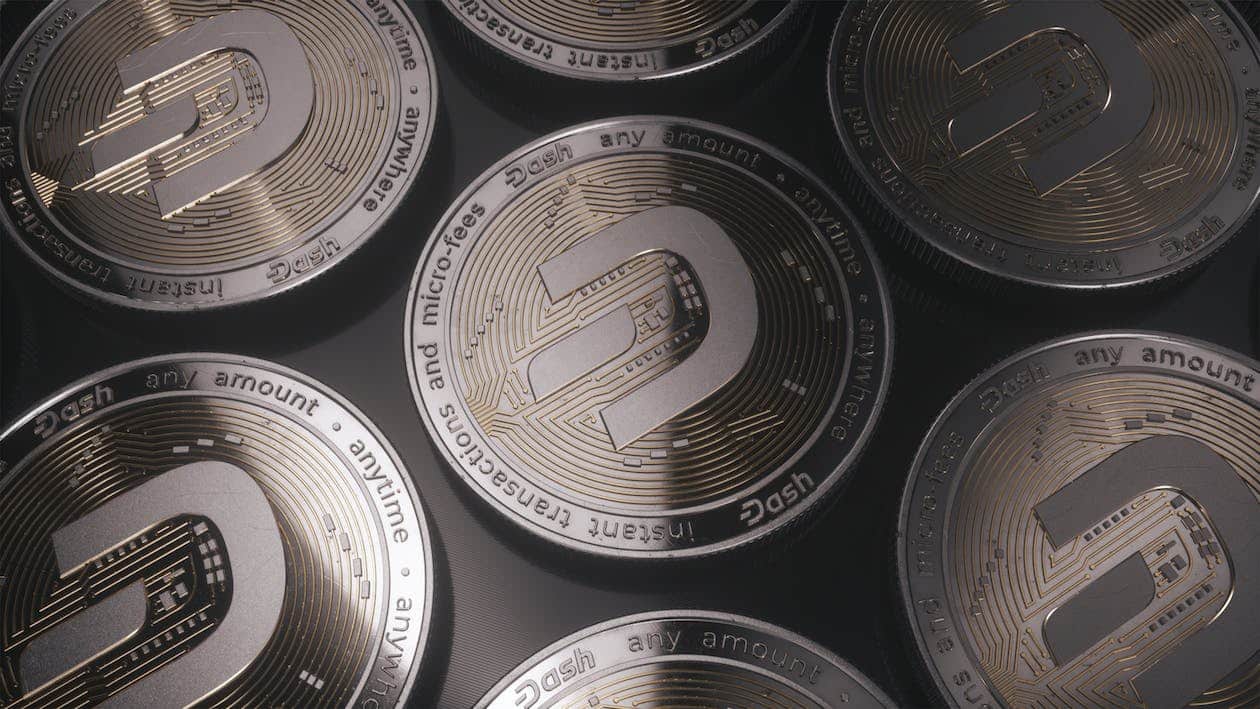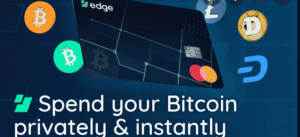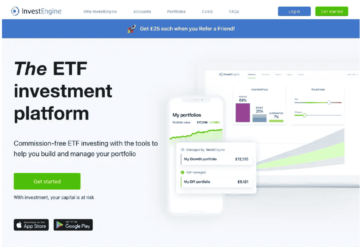
The cryptocurrency market is one of the most vibrant and active asset markets in the world at the moment.
Digital assets have integrated themselves into almost every industry in the world, from being widely accepted by retailers, to tech companies, healthcare businesses, and even online casino platforms like Bovada where players are able to play their favorite games using their preferred virtual currency.
When most people think about crypto, Bitcoin (BTC) is the first thing that comes to mind. It’s understandable, of course – Bitcoin was the first asset to be created, and it has continued to maintain its lead as the most valuable cryptocurrency since the inception of the market. When most newbie investors want to get into crypto, they go for Bitcoin – it has the longest track record and is seen by many as the best coin.
However, Bitcoin isn’t the only cryptocurrency in the market. There are thousands available at the moment, all of which try to solve one problem or the other.
ADVERTISEMENT
The term given to any cryptocurrency that isn’t Bitcoin is “altcoin” – essentially, it is an alternative coin; an alternative to Bitcoin, that is. Over the past few years, several altcoins have managed to gain prominence, with investors being attracted to their ability to also help deliver gains.
Understanding Altcoins
As explained earlier, an altcoin is any cryptocurrency that isn’t Bitcoin. These assets were launched with Bitcoin serving as the blueprint, and they are as impressive in their own way. Many altcoins have also moved in different directions from Bitcoin, contributing to the diversity that we see in the crypto space today.
Altcoins primarily solve specific use cases – which we’ll go into later. From the interesting to the seemingly mundane, there is no shortage of use cases for cryptocurrencies – and, there is no shortage of assets looking to fill these use cases.
Types of Altcoins
Payment Tokens
One of the primary reasons why cryptocurrencies were launched was to supply a means for people and companies to make payments and process transactions across the board.
White Bitcoin started as a medium for making payments, other cryptocurrencies appear to have picked up that mantle. XRP (XRP) is a solid example, leading the charge for cross-border transaction settlement.
ADVERTISEMENT
Stablecoins
Stablecoins are among the most popular and useful coins in the market. They solve an interesting use case – reducing the volatility in coin prices.
Traditional cryptocurrencies are known for being volatile. This volatility makes them attractive for gains, but it can also be devastating when coin prices slump. And for traders or people who want to send money abroad via crypto, this volatility can be an issue.
Stablecoins operate by being pegged to traditional currencies – the Dollar, Pound, etc. This way, a person can use cryptocurrencies for transactions without worrying about price changes.
Notable stablecoins include Tether (USDT), Binance USD (BUSD), and USD Coin (USDC).
Security Tokens
Security tokens work as tokenized assets that are offered on exchanges and stock markets. Any asset in the world can be tokenized – from traditional stocks to real estate and more. With security tokens, this process is easy and seamless.
Utility Tokens
A utility token is used to provide a specific service within a network or company.
Any organization can launch a product or service and provide access to it for anyone who purchases their cryptocurrency. For instance, when Vitalik Buterin and the Ethereum Foundation finally launched the Ethereum blockchain, access to it was only given to investors who purchase the Ethereum (ETH) token. Today, ETH is the second-most valuable token in the market, and Buterin has almost achieved cult status, especially since he published a book containing a compilation of his writing.
Utility tokens can be purchased and held for gains. However, their primary purpose is to provide access to specific services and tools.
Interestingly enough, exchanges themselves have launched their own utility tokens too. Binance has the Binance Coin (BNB), Quidax has the Quidax Token (QDX), and more. These assets allow the exchanges’ users to enjoy benefits like discounts on trading fees, access to exclusive communities, and more.
Meme Coins
As the name suggests, a meme coin is an asset whose creation was inspired by an internet meme or a joke. These coins primarily gain popularity over time, mostly due to their ability to catch on with people. Interestingly, they can also give some impressive gains.
Dogecoin (DOGE), Shiba inu (SHIB), and Floki inu (FLOKI) are some of the most popular meme coins in the market today. And, they are known primarily for sporadic price movements. In the months between January and April 2021, DOGE alone saw well over 1,000% in gains – while someone who held $8,000 worth of SHIB in 2020 saw it grow to $5.7 billion just a year later.
While meme coins aren’t necessarily known for having defined use cases, some of them do eventually develop functionalities. For instance, DOGE is starting to grow as a payment method, with several companies accepting it for payments. As long as there is a market for meme coin functionalities, they could work.
DC Forecasts is a leader in many crypto news categories, striving for the highest journalistic standards and abiding by a strict set of editorial policies. If you are interested to offer your expertise or contribute to our news website, feel free to contact us at [email protected]
- SEO Powered Content & PR Distribution. Get Amplified Today.
- Platoblockchain. Web3 Metaverse Intelligence. Knowledge Amplified. Access Here.
- Source: https://www.dcforecasts.com/press-releases/the-rise-of-altcoins-cryptocurrencies-beyond-bitcoin/
- :is
- $UP
- 000
- 1
- 10
- 2020
- 2021
- 7
- a
- ability
- Able
- About
- About Crypto
- accepted
- accepting
- access
- achieved
- across
- active
- All
- alone
- Altcoin
- Altcoins
- alternative
- among
- and
- anyone
- appear
- April
- ARE
- AS
- asset
- Assets
- At
- attracted
- attractive
- available
- BE
- being
- benefits
- BEST
- between
- Beyond
- Billion
- binance
- Binance Coin
- Binance Coin (BNB)
- Binance USD (BUSD)
- Bitcoin
- bitcoin started
- Bitpanda
- blockchain
- bnb
- board
- BTC
- BUSD
- businesses
- Buterin
- by
- CAN
- case
- cases
- Casino
- Catch
- categories
- Changes
- charge
- Coin
- Coins
- Communities
- Companies
- company
- contact
- continued
- contribute
- contributing
- could
- course
- created
- creation
- cross-border
- crypto
- Crypto News
- crypto space
- cryptocurrencies
- cryptocurrency
- cryptocurrency market
- cult
- currencies
- Currency
- defined
- deliver
- devastating
- develop
- different
- discounts
- Diversity
- Doge
- Dollar
- Earlier
- easy
- Editorial
- enjoy
- enough
- especially
- essentially
- estate
- etc
- ETH
- ethereum
- ethereum (ETH)
- Ethereum blockchain
- ethereum foundation
- Even
- eventually
- Every
- example
- Exchanges
- Exclusive
- expertise
- explained
- Favorite
- Fees
- few
- fill
- Finally
- First
- FLOKI
- Floki Inu
- For
- Foundation
- Free
- from
- functionalities
- Gain
- Gains
- Games
- get
- Give
- given
- Go
- Grow
- Have
- having
- healthcare
- Held
- help
- highest
- However
- HTTPS
- impressive
- in
- inception
- include
- industry
- inspired
- instance
- integrated
- interested
- interesting
- Internet
- Inu
- Investors
- issue
- IT
- ITS
- January
- known
- launch
- launched
- lead
- leader
- leading
- like
- Long
- looking
- maintain
- make
- MAKES
- Making
- managed
- many
- Market
- Markets
- means
- medium
- meme
- meme coin
- Meme Coins
- method
- mind
- moment
- money
- months
- more
- most
- Most Popular
- movements
- name
- necessarily
- network
- news
- of
- offer
- offered
- on
- ONE
- online
- online casino
- operate
- organization
- Other
- own
- past
- payment
- payment method
- payments
- People
- person
- picked
- Platforms
- plato
- Plato Data Intelligence
- PlatoData
- Play
- players
- policies
- Popular
- popularity
- pound
- preferred
- price
- Prices
- primarily
- primary
- Problem
- process
- Product
- prominence
- protected
- provide
- purchase
- purchased
- purchases
- purpose
- Quidax
- real
- real estate
- reasons
- record
- reducing
- retailers
- Rise
- seamless
- security
- Security Tokens
- service
- Services
- serving
- set
- settlement
- several
- SHIB
- Shiba
- Shiba Inu
- Shiba Inu (SHIB)
- shortage
- since
- Slump
- solid
- SOLVE
- some
- Someone
- Space
- specific
- Stablecoins
- standards
- started
- Starting
- Status
- stock
- Stock markets
- Stocks
- strict
- Suggests
- supply
- tech
- tech companies
- Tether
- Tether (USDT)
- that
- The
- The Ethereum Foundation
- the world
- their
- Them
- themselves
- These
- thing
- Think
- thousands
- time
- to
- today
- token
- tokenized
- tokenized assets
- Tokens
- too
- tools
- track
- Traders
- Trading
- Trading Fees
- traditional
- transaction
- Transactions
- understandable
- us
- USD
- USD Coin
- USD Coin (USDC)
- USDC
- USDT
- use
- use case
- users
- utility
- Utility Token
- Valuable
- via
- vibrant
- Virtual
- virtual currency
- vitalik
- vitalik buterin
- volatile
- Volatility
- Way..
- Website
- WELL
- which
- while
- WHO
- widely
- with
- within
- without
- Work
- world
- worth
- writing
- xrp
- XRP (XRP)
- year
- years
- Your
- zephyrnet












